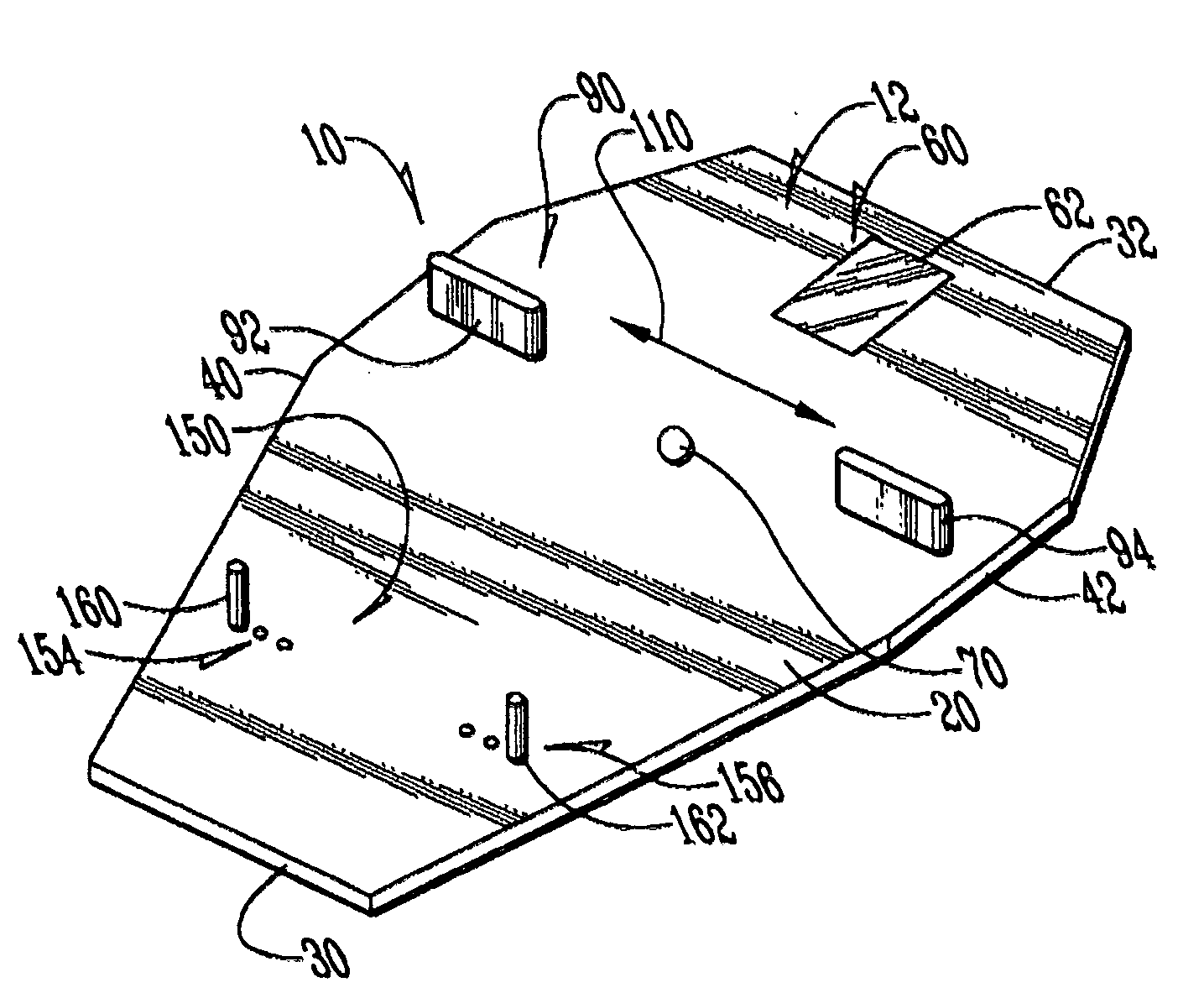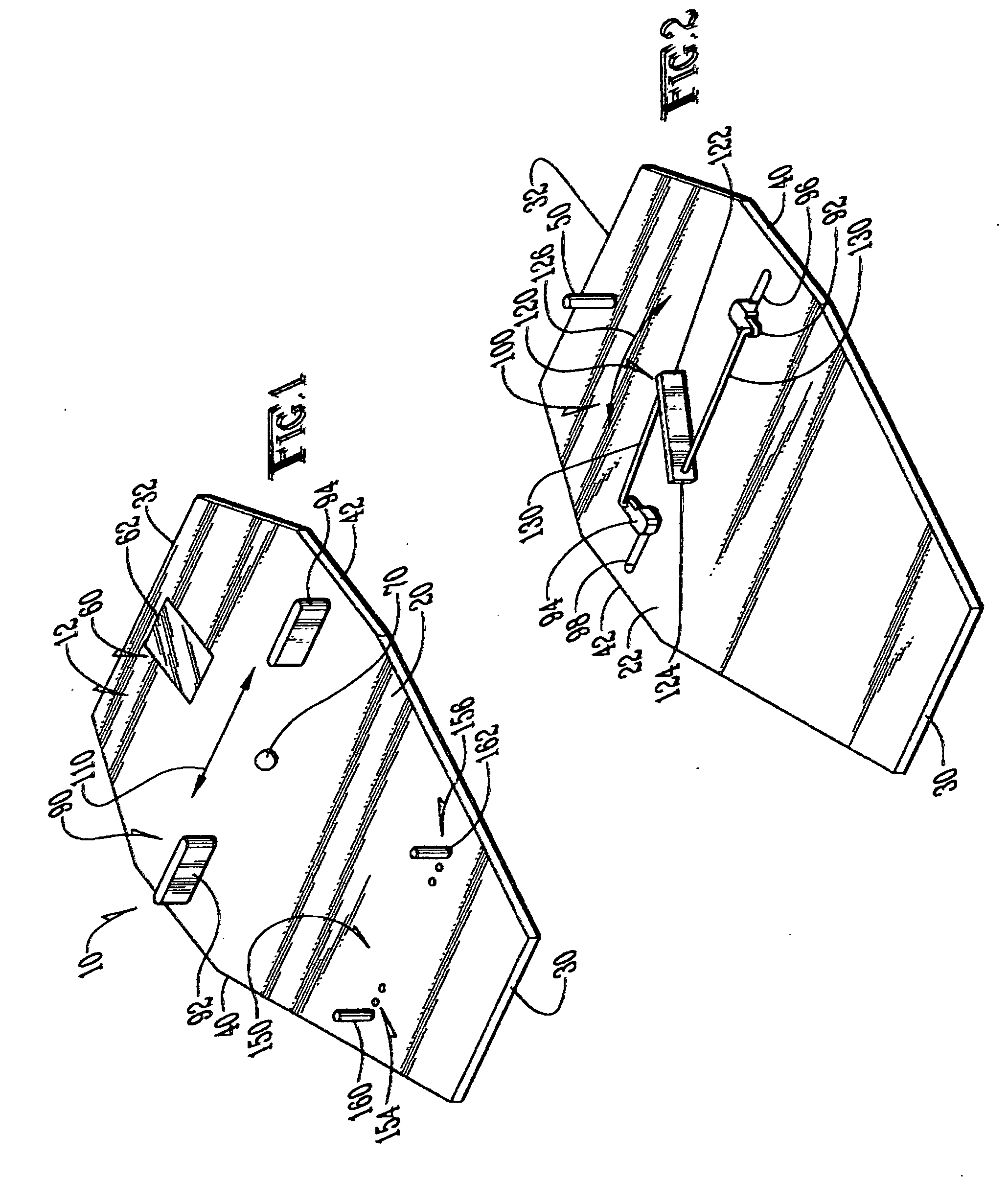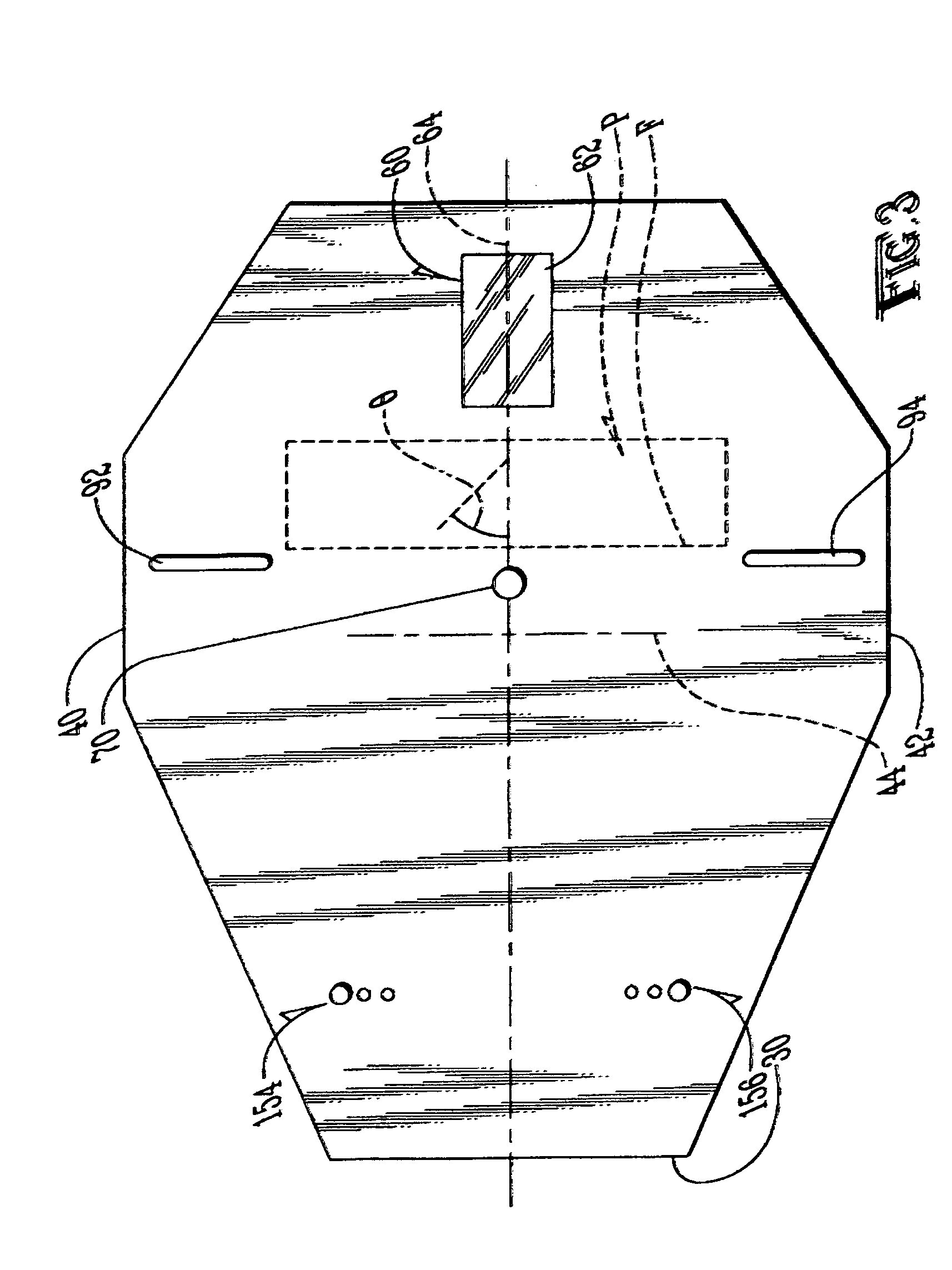Golf Putting Teaching Device and Method
- Summary
- Abstract
- Description
- Claims
- Application Information
AI Technical Summary
Benefits of technology
Problems solved by technology
Method used
Image
Examples
Embodiment Construction
[0026]Referring to the figures, it can be understood that the present invention is embodied in a putting stroke practice device 10 which comprises a base plate 12 that is placed on a putting surface and which has a first surface 20 which is a top surface when the base plate is in use, a second surface 22 which is a bottom surface when the base plate is in use, a first end 30 which is a front end when the base plate is in use, a second end 32 which is a rear end when the base plate is in use and a longitudinal axis 34 which extends between the first and second ends. Base plate 12 further includes a first side edge 40, a second side edge 42 and a transverse axis 44 which extends between the first and second side edges. Longitudinal axis 32 is positioned midway between the first and second side edges and defines a proper path for a ball which has been struck by a putter.
[0027]An anchor element 50 is connected at one end thereof to second surface 22 of the base plate and extends into an...
PUM
 Login to View More
Login to View More Abstract
Description
Claims
Application Information
 Login to View More
Login to View More - R&D
- Intellectual Property
- Life Sciences
- Materials
- Tech Scout
- Unparalleled Data Quality
- Higher Quality Content
- 60% Fewer Hallucinations
Browse by: Latest US Patents, China's latest patents, Technical Efficacy Thesaurus, Application Domain, Technology Topic, Popular Technical Reports.
© 2025 PatSnap. All rights reserved.Legal|Privacy policy|Modern Slavery Act Transparency Statement|Sitemap|About US| Contact US: help@patsnap.com



